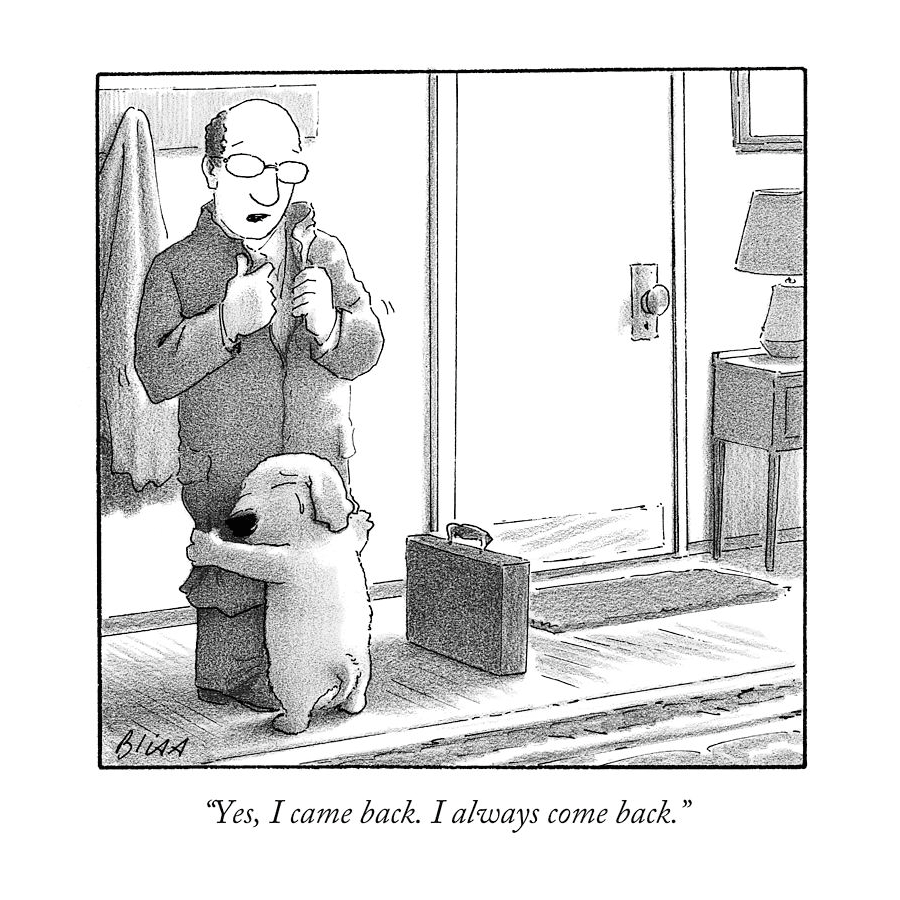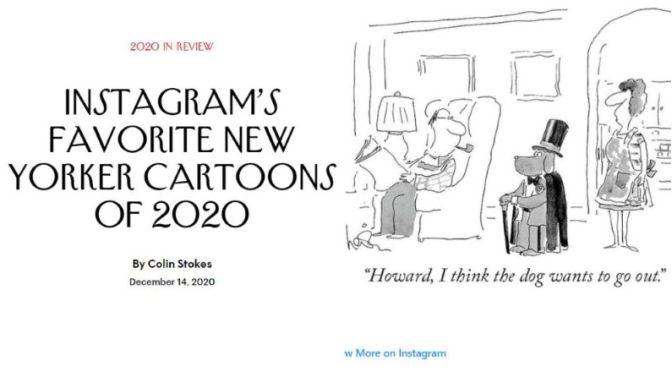Andrew Tuck is joined by Carolyn Steel, author of ‘Sitopia’, and urban epidemiologist Tolullah Oni, who unpack the lessons for our cities from 2020. Plus: Jan Gehl brings us some inspiration and hope for what’s ahead.
Tag Archives: 2020
Science Podcast: The Top Stories, Breakthroughs And Books Of 2020

Our last episode of the year is a celebration of science in 2020. First, host Sarah Crespi talks with Online News Editor David Grimm about some of the top online news stories of the year—from how undertaker bees detect the dead to the first board game of death. (It’s not as grim as it sounds.)
Sarah then talks with Online News Editor Catherine Matacic about the Breakthrough of the Year, scientific breakdowns, and some of the runners-up—amazing accomplishments in science achieved in the face of a global pandemic. Finally, Book Review Editor Valerie Thompson joins Sarah to discuss highlights from the books section—on topics as varied as eating wild foods to how the materials we make end up shaping us.
Interviews: Design And Architecture In 2020 – Ilse Crawford & Julia Watson

A look back at the year that was in design and architecture, featuring conversations with creative director Ilse Crawford and designer and author Julia Watson.
Plus: Venice Biennale 2020 curator Hashim Sarkis.
Humor: Favorite ‘New Yorker Cartoons’ Of 2020

Cartoons by Harry Bliss; Lila Ash; Elisabeth McNair; Ellie Black; Mike Twohy
Tributes: British Author John le Carré (1931-2020)
John le Carré, who forged thrillers from equal parts of adventure, moral courage and literary flair, has died aged 89.
Le Carré explored the gap between the west’s high-flown rhetoric of freedom and the gritty reality of defending it, in novels such as The Spy Who Came in from the Cold, Tinker Tailor Soldier Spy and The Night Manager, which gained him critical acclaim and made him a bestseller around the world.
On Sunday, his family confirmed he had died of pneumonia at the Royal Cornwall Hospital on Saturday night. “We all deeply grieve his passing,” they wrote in a statement.
His longtime agent Jonny Geller described him as “an undisputed giant of English literature. He defined the cold war era and fearlessly spoke truth to power in the decades that followed … I have lost a mentor, an inspiration and most importantly, a friend. We will not see his like again.”
Tributes: Country Singer Charlie Pride (1934-2020)

We remember Charley Pride, one of the first African Americans to become popular as a country artist. Pride died yesterday at the age of 86, of complications from COVID-19.
Charley Frank Pride (March 18, 1934 – December 12, 2020) was an American singer, guitarist, and professional baseball player. His greatest musical success came in the early to mid-1970s, when he was the best-selling performer for RCA Records since Elvis Presley.[1] During the peak years of his recording career (1966–87), he had 52 top 10 hits on the Billboard Hot Country Songs chart, 30 of which made it to number one. He won the Entertainer of the Year award at the Country Music Association Awards in 1971.
Pride was one of three African-American members of the Grand Ole Opry (the others are DeFord Bailey and Darius Rucker). He was inducted into the Country Music Hall of Fame in 2000.
Rise to fame
While he was active in baseball, Pride had been encouraged to join the music business by country stars such as Red Sovine and Red Foley, and was working towards this career. In 1958, in Memphis, Pride visited Sun Studios and recorded some songs.[14]
He performed his music solo at clubs and with a four-piece combo called the Night Hawks during the time he lived in Montana.[11] His break came when Chet Atkins at RCA Victor heard a demonstration tape and got Pride a contract. In 1966, he released his first RCA Victor single, “The Snakes Crawl at Night”.[11] Nashville manager and agent Jack D. Johnson signed Pride. Atkins was the longtime producer at RCA Victor who had made stars out of country singers such as Jim Reeves, Skeeter Davis, and others. Pride was signed to RCA Victor in 1965. “The Snakes Crawl at Night” did not chart. On the records of this song submitted to radio stations for airplay, the singer was listed as “Country Charley Pride”. Pride disputes that the omission of a photo was deliberate; he stated that getting promoters to bring in a black country singer was a bigger problem: “people didn’t care if I was pink. RCA signed me… they knew I was colored…They decided to put the record out and let it speak for itself.”[11] While living in Montana, he continued to sing at local clubs, and in Great Falls had an additional boost to his career when he befriended local businessman Louis Allen “Al” Donohue, who owned radio stations including KMON, the first stations to play Pride’s records in Montana.[11]
Soon after the release of “The Snakes Crawl at Night”, Pride released another single called “Before I Met You”, which also did not chart. Not long afterwards, his third single, “Just Between You and Me”, was released. This song finally brought Pride success on the country charts. The song reached number nine on Hot Country Songs on February 25, 1967.[15]
According to a news item by the Associated Press, Pride made this comment in a 1992 interview: “They used to ask me how it feels to be the ‘first colored country singer’ .. Then it was ‘first Negro country singer;’ then ‘first black country singer.’ Now I’m the ‘first African-American country singer.’ That’s about the only thing that’s changed”. [16]
Career peak
“Pride’s amazing baritone—it hints at twang and melisma simultaneously, and to call it warm is to slight the brightness of its heat”
–Christgau’s Record Guide: Rock Albums of the Seventies (1981)
The success of “Just Between You and Me” was enormous. Pride was nominated for a Grammy Award for the song the next year. In the late summer of 1966, on the strength of his early releases, he was booked for his first large show, in Detroit‘s Olympia Stadium. Since no biographical information had been included with those singles, few of the 10,000 country fans who came to the show knew Pride was black, and only discovered the fact when he walked onto the stage, at which point the applause trickled off to silence. “I knew I’d have to get it over with sooner or later,” Pride later remembered. “I told the audience: ‘Friends, I realize it’s a little unique, me coming out here—with a permanent suntan—to sing country and western to you. But that’s the way it is.’ ”[18]
The show became the first of a long and active career playing to large audiences, his race soon becoming a minor detail compared to his success. In 1967, he became the first black performer to appear at the Grand Ole Opry since founding member DeFord Bailey, who had last appeared in 1941.[19] Between 1969 and 1971, Pride had eight singles that reached number one on the US Country Hit Parade and also charted on the Billboard Hot 100: “All I Have to Offer You (Is Me)“, “(I’m So) Afraid of Losing You Again“, “I Can’t Believe That You’ve Stopped Loving Me“, “I’d Rather Love You“, “Is Anybody Goin’ to San Antone“, “Wonder Could I Live There Anymore“, “I’m Just Me“, and “Kiss an Angel Good Mornin’“. The pop success of these songs reflected the country/pop crossover sound that was reaching country music in the 1960s and early 1970s, known as “Countrypolitan“. In 1969, his compilation album, The Best of Charley Pride, sold more than one million copies, and was awarded a gold disc.[20] Ultimately, Elvis Presley was the only artist who sold more records than Pride for RCA Victor.[11]
Pride performed “All His Children“, featured in the film Sometimes a Great Notion (1971).[21] The film received two Oscar nominations in 1972, one for “All His Children”.[22]
“Kiss an Angel Good Mornin'”
In 1971, Pride released what would become his biggest hit, “Kiss an Angel Good Mornin'”, a million-selling crossover single. The same year, he won the Country Music Association‘s entertainer of the year award, as well as its top male vocalist award in 1971 and 1972.[23]
“Kiss an Angel Good Mornin'” became Pride’s signature tune. Besides being a five-week country number one in late 1971 and early 1972, the song was also his only pop top-40 hit, hitting number 21, and reaching the top 10 of the Adult Contemporary charts, as well.
Reviews: TIME Magazine – Person Of The Year (2020)
The Biden-Harris ticket represents something historic. Person of the Year is not just about the year that was, but about where we’re headed.
Travel & Food: Christmas Market In Berlin, Germany
Christmas is unfortunately different this year. Annual tradition of Christmas Market is officially not taking place. However, in Berlin, there are some food stands selling typical christmas street foods. It is called Christmas Market “to-go” where you can get the foods/drinks to go. Nevertheless, it gives us opportunity to taste Christmas Street Foods. And by the way, the foods are great!
Video timeline: 0:00 Overview 1:03 Hygiene Precautions 1:39 Churro 2:51 Half a meter Sausage 4:12 Warm Glühwein and Eggnog 6:07 Bulette im Brötchen 7:15 Germknödel with Cherry and Vanilla Sauce
Aerial Tours: ‘Cromer’, North Sea Coast, England
Cromer is a coastal town and civil parish on the north coast of the English county of Norfolk. It is approximately 23 miles north of the county town of Norwich, 116 miles north-northeast of London and 4 miles east of Sheringham on the North Sea coastline.
Cromer is a traditional Victorian seaside resort, with a sand and shingle beach popular for swimming and surfing. Many of the buildings in the town date back to the Victorian era, although the town has expanded rapidly in the last fifty years. Some shelter is provided by the pier, which houses a theatre and gardens.Cromer beach and pier are part of the quintessentially Victorian seaside resort of Cromer, on the popular North Norfolk coast. Just along the road from Sheringham and West Runton, and just around the corner from Overstrand, Cromer beach, just like many other Norfolk beaches, has so much to offer, from the little fun fair on the promenade to a museum on the beach front, to the wonderful iconic Pier with its Pavilion Theatre and lifeboat station at the end. Never a dull moment.
Art History: ‘Watercolor In The Renaissance’ (Video)
Focussing on the three types of object featured in the V&A display Renaissance Watercolours: illuminated manuscripts, portrait miniatures and coloured drawings, this film showcases the qualities that made watercolour the medium of choice for many artists during the Renaissance.
A modern-day painting of a pomegranate, using traditional watercolour techniques, by artist Lucy Smith, also demonstrates how watercolour painting remains a versatile medium, ideal for capturing life-like details that help us to record our diverse world.










